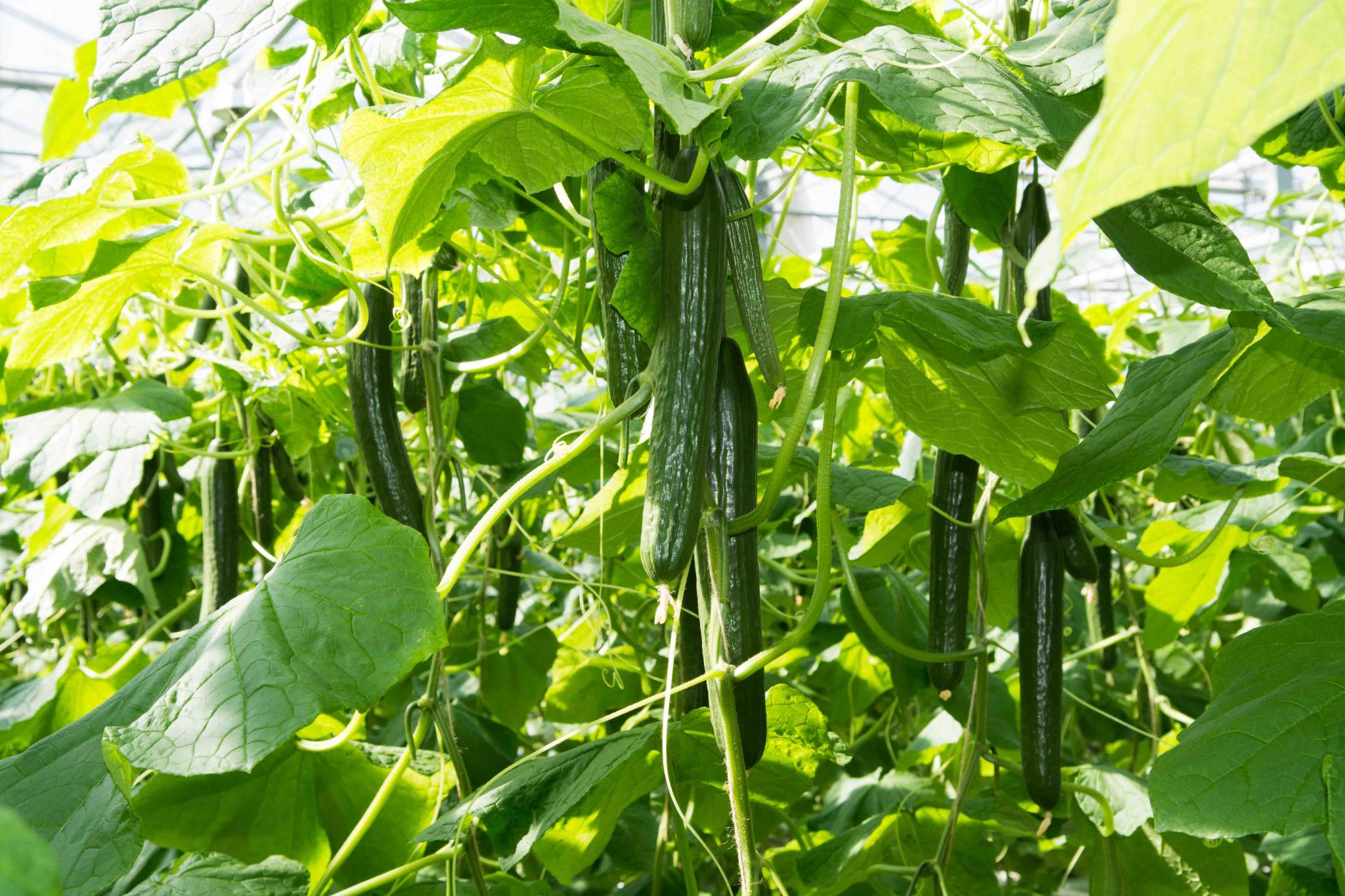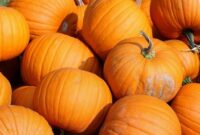An easy-care vegetable that loves sun and water, cucumbers grow quickly as long as they receive consistent watering and warmth. Don’t let cucumbers get too large before you pick or they will taste bitter! See how to plant, grow, and harvest cucumbers in your garden.
About Cucumbers
There are two types of cucumber plants: vining cucumbers and bush cucumbers.
- Vining cucumbers, the most common varieties, grow on vigorous vines shaded by large leaves. The growth of these plants is fast, and the crop yield is abundant if you care for them properly. Vining varieties grow best when trained up a trellis or fence. Since they grow off the ground, the fruits will be cleaner—versus those that grow directly atop soil—often more abundant, and easier to pick.
- Bush cucumbers, however, are nicely suited to containers and small gardens.
If you’re interested in making pickles, we recommend several prolific varieties below that are bred especially for pickling, such as heirloom ‘Boston Pickling’ or ‘Calypso’. For crispy pickles, be sure to prepare them within a few hours of harvesting!
When to Plant Cucumbers
- For an early crop, sow cucumber seeds indoors about 3 weeks before you plan to transplant them in the ground. Provide bottom heat of about 70ºF (21ºC) with a heating pad or place the seed flats on top of a refrigerator or water heater.
- Cucumber plants should be seeded outdoors or transplanted outside in the ground no earlier than 2 weeks after the last frost date. Cucumbers are extremely susceptible to frost and cold damage; the soil must be at least 70ºF (21ºC) for germination. Seedlings set best at that temperature, too. (In cooler climates, warm the soil by covering it with black plastic.) Do not plant outside too soon!
-
Make successive plantings (every 2 weeks) for continued harvests through the season. In warm soil, cucumbers will grow quickly and ripen in about 6 weeks.

Choosing and Preparing a Planting Site
- Select a site with full sun. Cucumbers need warmth and lots of light.
- Cucumbers require fertile soil. Prior to planting, add about 2 inches of aged manure and/or compost to the bed and work it in to a depth of 6 to 8 inches. Soil should be moist but well-draining (not soggy) and warm.
- Soil should be neutral or slightly acidic with a pH of around 6.5 to 7.0.
- Improve clay soil by adding organic matter. Improve dense, heavy soil by adding peat, compost, or rotted manure. (Get a soil test if you are unsure of your soil type; contact your local county cooperative extension.) Light, sandy soils are preferred for northern gardens, as they warm quickly in the spring. See our guide to soil amendments.
How to Plant Cucumbers
- Plant seeds 1 inch deep and about 3 to 5 feet apart in a row, depending on variety (see seed packet for details). For vines trained on a trellis, space plants 1 foot apart.
- Cucumbers can also be planted in mounds (or “hills”) that are spaced 1 to 2 feet apart, with 2 to 3 seeds planted in each mound. Once plants reach 4 inches in height, thin them to one plant per mound.
- If you live in the cooler climates, you can help warm the soil prior to planting by covering the hill or row with black plastic.
- After planting, mulch around the area with straw, chopped leaves, or another organic mulch to keep pests at bay, and also keep bush types off the ground to avoid disease.
- A trellis is a good idea if you want the vine to climb, or if you have limited space. Trellising also protects the fruit from damage from lying on the moist ground. See how to build a trellis and support for vining vegetables.
- Cover freshly planted cucumber seeds with row covers, netting, or a berry basket if you have pests; this will keep them from digging out the seeds.
Check out this video to learn more about how to plant cucumbers.
How to Grow Cucumbers
- When seedlings emerge, begin to water frequently.
- The main care requirement for cucumbers is consistent watering! They need at least one inch of water per week (or more, if temperatures are particularly high). Inconsistent watering leads to bitter-tasting fruit.
- Water slowly in the morning or early afternoon, and avoid getting the leaves wet, as that may encourage leaf diseases that can ruin the plant. If possible, water your cucumbers with a soaker hose or drip irrigation to keep the foliage dry.
- Mulch around plants to retain soil moisture.
-
Cover young plants with row covers or berry baskets if pests appear.
- When seedlings reach 4 inches tall, thin plants so that they are at least 1½ feet apart.
- If you’ve worked organic matter into the soil before planting, you may only need to side-dress your plants with compost or well-rotted manure sparingly.
- Otherwise, fertilize the plants with a liquid 5-10-10 fertilizer. Apply 1 week after the plant starts blooming and every 3 weeks thereafter, directly to the soil around the plants. Or, you can work a granular fertilizer into the soil. Do not over-fertilize or the fruits will get stunted.
- If you have limited space or would prefer vertical vines, set up trellises early to avoid damage to seedlings and vines.
- Spray vines with sugar water to attract bees and set more fruit.

| Pest/Disease | Type | Symptoms | Control/Prevention |
|---|---|---|---|
| Anthracnose | Fungus | Yellow/brown/purple/black spots on leaves; sunken, dark spots on stems and fruit; spots may develop a salmon-pink, gelatinous mass; eventually, rot; in corn, tops die back and stalks rot | Destroy infected plants; choose resistant varieties; provide good drainage; avoid overhead watering; apply compost; use mulch; rotate crops |
| Aphids | Insect | Misshapen/yellow leaves; distorted flowers/fruit; sticky “honeydew” (excrement); sooty, black mold | Grow companion plants; knock off with water spray; apply insecticidal soap; put banana or orange peels around plants; wipe leaves with a 1 to 2 percent solution of dish soap (no additives) and water every 2 to 3 days for 2 weeks; add native plants to invite beneficial insects |
| Blossom-end rot | Disorder | Dark, water-soaked spots on blossom end of fruit (opposite stem) may enlarge and become sunken and leathery | Caused by lack of calcium in fruit, often due to roots failing to obtain sufficient water and/or nutrients. Remove affected fruit; plant at proper soil temperature; water deeply and evenly; use mulch; maintain proper soil pH (around 6.5) and nutrient levels; avoid excessive nitrogen; provide good drainage; prevent root damage |
| Cucumber beetles | Insect | Holes in leaves/flowers; rasped fruit; plants stunted/die (Bacterial wilt signs: wilting; plants die; ends of cut stems, when pressed together for 10 seconds and pulled apart, release stringy, white sap) | Handpick; mulch heavily; use row covers; destroy plants infected with bacterial wilt |
| Downy mildew | Fungus | Yellow, angular spots on upper leaf surfaces that turn brown; white/purple/gray cottony growth on leaf undersides only; distorted leaves or corn tassels; defoliation | Remove plant debris; choose resistant varieties; ensure good air circulation; avoid overhead watering |
| Powdery mildew | Fungus | Typically, white spots on upper leaf surfaces expand to flour-like coating over entire leaves; foliage may yellow/die; distortion/stunting of leaves/flowers | Destroy infected leaves or plants; choose resistant varieties; plant in full sun, if possible; ensure good air circulation; spray plants with 1 teaspoon baking soda dissolved in 1 quart water; destroy crop residue |
| Mosaic virus (cucumber) | Virus | Varies with plant, but may include stunting, mottled green/yellow/white pattern or ringed spots on leaves/fruit; distorted leaf growth; warts on fruit | Destroy infected plants; choose resistant varieties and certified virus-free seed; use row covers; disinfect tools; weed; control aphids; use mulch |
| Squash bugs | Insect | Many small, yellow/brown/black spots on leaves; wilt; scarred fruit | Handpick; crush yellow/bronze egg clusters on leaf undersides; lay boards on soil and check for pests underneath each morning; remove plant debris; use row covers; rotate crops |
| Whiteflies | Insect | Sticky “honeydew” (excrement); sooty, black mold; yellow/ silver areas on leaves; wilted/stunted plants; distortion; adults fly if disturbed; some species transmit viruses | remove infested leaves/plants; use handheld vacuum to remove pests; spray water on leaf undersides in morning/evening to knock off pests; monitor adults with yellow sticky traps; spray with insecticidal soap; invite beneficial insects and hummingbirds with native plants; weed; use reflective mulch |
Little or No Fruit:
- If your cucumber plants do not set fruit, it’s not usually caused by a disease. There is probably a pollination issue. The first flowers are usually all male. Both female and male flowers must be blooming at the same time for fruit to set. This may not happen early in the plant’s life, so be patient. (Female flowers are the ones with a small cucumber-shaped swelling at the base that will become the fruit; male flowers do not have this swelling at the base.)
- Lack of fruit may also be due to poor pollination by bees, especially due to rain or cold temperatures, or insecticides. To rest assured, you could always hand pollinate. (Dip a Q-tip into the male pollen and transfer it to the center of the female flower.)
- Remember, gynoecious hybrid varieties (those that produce primarily female flowers) require companion cucumber plants with male flowers in order to produce fruit.
- ‘Boston Pickling’ (vine) is our favorite heirloom variety bred especially for pickling.
- ‘Burpless Bush Hybrid’ (bush) is good for small gardens, pots, or pickling.
- ‘Bush Crop’ (bush) is a dwarf variety with a high yield. Great for eating fresh.
- ‘Calypso’ (vine) is disease-resistant and has a high yield. Perfect for pickling.
- ‘Lemon’ (vine) produces round, yellow, super-sweet fruits. Fun for kids!
- ‘Parisian Pickling’ (vine) produces long, thin cucumbers perfect for making gherkins or cornichons.
- ‘Sweet Success’ (vine) is good for greenhouses, as it requires no pollinators. Produces seedless fruit.
How to Harvest Cucumbers
- Don’t let cucumbers get too large or they will taste bitter.
- At peak harvesting time, you should be picking cucumbers every couple of days. They’ll grow quickly!
- Harvest regular slicing cucumbers when they about 6 to 8 inches long (slicing varieties).
- Harvest dills at 4 to 6 inches long and pickling cucumbers at 2 inches long.
- The large burpless cucumbers can be up to 10 inches long and some types are even larger.
- Cucumbers are best picked before their seeds become hard and are eaten when immature. Do not let them get yellow. A cucumber is of highest quality when it is uniformly green, firm, and crisp.
- Any cucumbers left on the vine too long will also get tough skins and lower plant productivity.
- Use a knife or clippers to cut the stem above the fruit. Pulling the fruit may damage the vine.
- Keep them picked. If you don’t, as plants mature, they will stop producing.
How to Store Cucumbers
- Cucumbers are over 90 percent water. Store wrapped tightly in plastic wrap to retain moisture.
- They will keep for 7 to 10 days when stored properly in the refrigerator.
- Plant cucumbers while you are wearing your pajamas, on the first day of May, before sunrise, and no bugs will eat them.
-
“Burpless” cucumbers have little to no cucurbitacin, which causes bitterness and increases the likelihood of burping by those who consume it.
- If you’re pickling, consider growing dill, a favorite pickling herb! Plant every few weeks into midsummer to ensure a constant supply. See our Growing Guide for Dill.
- Don’t forget that cucumbers aren’t just for eating. When puréed in the blender, cucumbers make a great summer facial for toning the skin and reducing puffiness. Check out other great and unexpected uses for cucumbers.
- With special molds, you can grow cucumbers in different shapes like hearts and stars!
- See our section on pickling with lots of recipes and ideas.
- Enjoy our fun video on How to Make Easy Refrigerator Dill Pickles!




